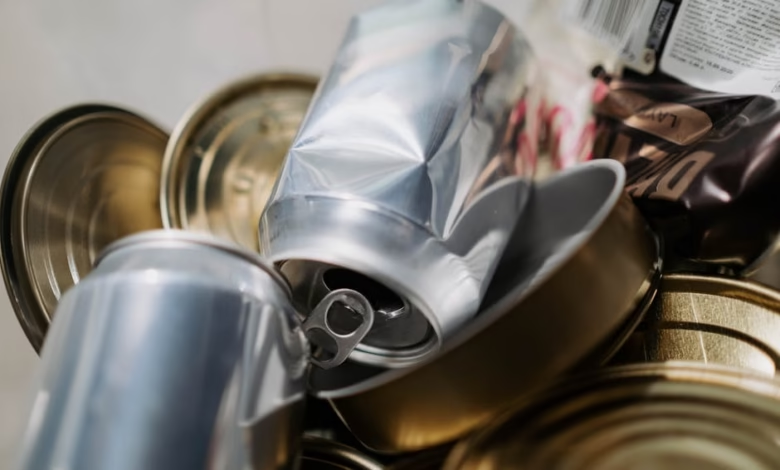Metal Recycling Uncovered: Processes, Market Trends, and the Future of Sustainable Metal Production

In an era where sustainability is paramount, the importance of metal recycling has surged, transforming waste into valuable resources and minimizing the environmental impact of metal mining. This article explores the intricate processes involved in recycling various metals, from ferrous to non-ferrous categories, highlighting the significance of industrial metals like steel, aluminum, and copper. As we delve into market trends, we will uncover insights into precious metals such as gold and silver, as well as base metals like zinc and lithium, which are increasingly sought after for their applications in industries ranging from aerospace to automotive. Additionally, we will examine the future of sustainable metal production, focusing on innovations in metallurgy and the role of 3D printing metals in creating efficient manufacturing solutions. By understanding these processes and trends, investors and industry professionals can navigate the evolving landscape of metal commodities while contributing to a more sustainable future.
- 1. Understanding Metal Recycling Processes: From Ferrous to Non-Ferrous Metals
- 2. Market Trends in Metal Recycling: Insights into Precious and Base Metals
- 3. The Future of Sustainable Metal Production: Innovations in Metallurgy and 3D Printing Metals
1. Understanding Metal Recycling Processes: From Ferrous to Non-Ferrous Metals
Metal recycling is a vital process that contributes significantly to sustainability and resource conservation. Understanding the processes involved in recycling metals, particularly the distinctions between ferrous and non-ferrous metals, is essential for appreciating the broader implications of metal recycling in today’s economy.
Ferrous metals, primarily composed of iron, include common materials such as steel and cast iron. These metals are widely used in construction, automotive, and manufacturing industries due to their strength and durability. The recycling of ferrous metals involves several steps, starting with collection and sorting. After collection, ferrous scrap is processed through shredding and magnetic separation to remove contaminants and non-ferrous materials. Once purified, the scrap is melted down in a furnace, allowing for the creation of new metal products. This recycling process not only reduces the need for metal mining but also conserves energy and minimizes metal corrosion issues associated with new metal production.
In contrast, non-ferrous metals do not contain iron and include a variety of materials such as aluminum, copper, zinc, lithium, and precious metals like gold and silver. The recycling process for non-ferrous metals is similar but typically involves more detailed separation techniques, as these metals often come from diverse sources, including electronics, automotive components, and jewelry. The recycling of non-ferrous metals is crucial for industries reliant on metal alloys and advanced metallurgy. For instance, aluminum is extensively used in aerospace and construction, while copper is essential for electrical applications. Recycling these metals decreases the demand for virgin materials and supports sustainable metal production practices.
Additionally, the rise of rare earth metals and battery metals has heightened interest in metal recycling. These elements are crucial in the production of high-tech devices, renewable energy technologies, and electric vehicles. As the market for these metals expands, efficient recycling processes will become increasingly important to meet the demand without further depleting natural resources.
The trends in metal recycling are influenced by global market dynamics, including shifts towards green technologies and increased regulations on waste management. Investors are also recognizing opportunities in gold investing and silver investing, as these precious metals maintain value and are highly sought after in both industrial and jewelry markets.
As we progress into an era focused on sustainable practices, the importance of metal recycling processes will continue to grow. Understanding the distinctions between ferrous and non-ferrous metals and their respective recycling processes is fundamental for industries aiming to implement effective metal fabrication and production strategies while minimizing environmental impact. This knowledge will also be crucial for stakeholders looking to capitalize on emerging metal commodities and trends in 3D printing metals, ensuring a circular economy that benefits all.
2. Market Trends in Metal Recycling: Insights into Precious and Base Metals
The metal recycling industry is experiencing notable trends, influenced by both market demands and technological advancements. As awareness of environmental sustainability increases, metal recycling has gained prominence as a vital component of the circular economy. This shift is particularly evident in the recycling of both precious and base metals.
Precious metals such as gold, silver, platinum, and palladium are seeing heightened interest among investors. Gold investing, for instance, remains a popular choice as a hedge against inflation and economic uncertainty. The jewelry metals market continues to thrive, driven by both consumer demand and the allure of sustainable sourcing practices. Moreover, the increasing use of precious metals in electronics and renewable energy technologies further solidifies their market position.
On the other hand, base metals like copper, aluminum, zinc, and steel are essential for various industrial applications. The demand for construction metals remains robust, fueled by infrastructure projects and urban development. Similarly, automotive metals are critical in manufacturing lighter, more fuel-efficient vehicles. The rise of 3D printing metals is also reshaping the landscape, allowing for innovative designs and reducing waste in metal fabrication.
The recycling of ferrous and non-ferrous metals plays a key role in meeting the demand for industrial metals. Ferrous metals, primarily iron and steel, are widely recycled due to their magnetic properties and the economic benefits associated with recycling. Non-ferrous metals, including aluminum and copper, are increasingly valuable in the recycling market, driven by their high demand in sectors like aerospace, energy, and automotive manufacturing.
Moreover, metal trends indicate a growing interest in rare earth metals and battery metals, particularly lithium, which is critical for energy storage solutions. As electric vehicles gain popularity, the need for sustainable metal production and recycling of battery metals will only intensify.
In conclusion, the market dynamics in metal recycling are continually evolving, influenced by factors such as economic conditions, technological advancements, and sustainability efforts. As industries increasingly turn to recycled metals, both precious and base metals will play a crucial role in shaping the future of metallurgy and metal mining.
3. The Future of Sustainable Metal Production: Innovations in Metallurgy and 3D Printing Metals
The future of sustainable metal production is being shaped by remarkable innovations in metallurgy and the advent of 3D printing metals. As the demand for metals continues to rise due to industrial growth, construction projects, and the expanding electronics sector, it is essential to explore sustainable practices that mitigate environmental impacts.
Innovations in metallurgy are critical for enhancing the efficiency of metal recycling processes. By improving the methods used to extract and process ferrous metals, non-ferrous metals, and precious metals, manufacturers can reduce waste and energy consumption. For instance, advancements in the recycling of base metals like aluminum and copper have led to more effective recovery techniques, ensuring that less material ends up in landfills. Moreover, the development of new metal alloys can enhance the performance of recycled materials, making them suitable for high-demand applications, such as aerospace metals and automotive metals.
3D printing metals is another game-changer in sustainable metal production. This technology allows for the precise fabrication of complex metal parts, significantly reducing material waste compared to traditional manufacturing methods. With the ability to use recycled metals in 3D printing, industries can further decrease their reliance on metal mining, which is often environmentally damaging. This innovation supports the creation of parts from energy metals, battery metals, and refractory metals, which are essential for sectors like renewable energy and advanced electronics.
Furthermore, as the market trends in metal commodities shift towards sustainability, there is an increasing interest in gold investing and silver investing. Investors are recognizing the value of metals that are sourced responsibly, which is leading to a greater focus on the lifecycle of metals—from mining to recycling. This shift not only promotes the use of recycled materials but also encourages the development of sustainable practices across the entire metal production spectrum.
In conclusion, the future of sustainable metal production lies in the synergy of innovative metallurgy and 3D printing technologies. By embracing these advancements, industries can minimize their environmental impact while meeting the growing demand for diverse metals, including lithium, platinum, palladium, and other rare earth metals. As we move forward, the focus on sustainability in metal fabrication will be pivotal to shaping a more responsible and efficient metal economy.
In conclusion, the landscape of metal recycling is evolving rapidly, driven by the increasing demand for sustainable practices and innovative technologies. Understanding the various processes involved in recycling both ferrous and non-ferrous metals is crucial for maximizing the value of metal commodities. As market trends indicate a growing interest in precious metals like gold and silver, along with base metals such as aluminum, copper, and zinc, investors and industries alike are recognizing the potential of metal recycling as a viable alternative to traditional metal mining.
Moreover, the future of sustainable metal production is being shaped by advancements in metallurgy and the rise of 3D printing metals, which offer exciting possibilities for the creation of metal alloys and the efficient fabrication of construction, automotive, and aerospace metals. As the industry adapts to the challenges of metal corrosion and the need for rare earth and battery metals, it is clear that metal recycling will play a pivotal role in addressing the demands of modern manufacturing and resource conservation.
By remaining informed about the latest metal trends and investing in innovative recycling solutions, stakeholders can contribute to a circular economy that minimizes waste and maximizes resource efficiency. As we look ahead, the integration of sustainable practices in metal recycling not only enhances economic viability but also supports environmental stewardship, ensuring a healthier planet for future generations.





